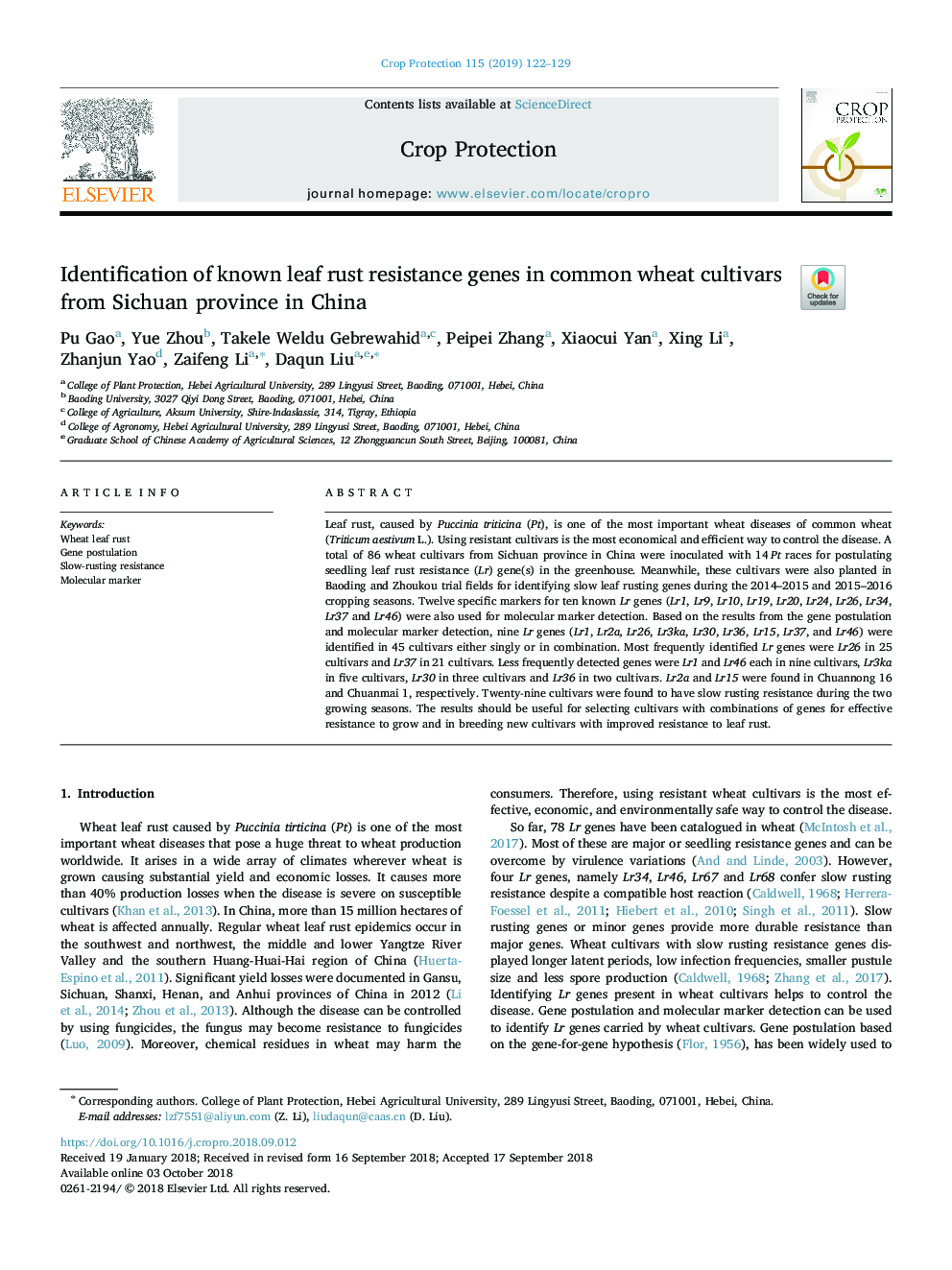| Article ID | Journal | Published Year | Pages | File Type |
|---|---|---|---|---|
| 11024966 | Crop Protection | 2019 | 8 Pages |
Abstract
Leaf rust, caused by Puccinia triticina (Pt), is one of the most important wheat diseases of common wheat (Triticum aestivum L.). Using resistant cultivars is the most economical and efficient way to control the disease. A total of 86 wheat cultivars from Sichuan province in China were inoculated with 14â¯Pt races for postulating seedling leaf rust resistance (Lr) gene(s) in the greenhouse. Meanwhile, these cultivars were also planted in Baoding and Zhoukou trial fields for identifying slow leaf rusting genes during the 2014-2015 and 2015-2016 cropping seasons. Twelve specific markers for ten known Lr genes (Lr1, Lr9, Lr10, Lr19, Lr20, Lr24, Lr26, Lr34, Lr37 and Lr46) were also used for molecular marker detection. Based on the results from the gene postulation and molecular marker detection, nine Lr genes (Lr1, Lr2a, Lr26, Lr3ka, Lr30, Lr36, Lr15, Lr37, and Lr46) were identified in 45 cultivars either singly or in combination. Most frequently identified Lr genes were Lr26 in 25 cultivars and Lr37 in 21 cultivars. Less frequently detected genes were Lr1 and Lr46 each in nine cultivars, Lr3ka in five cultivars, Lr30 in three cultivars and Lr36 in two cultivars. Lr2a and Lr15 were found in Chuannong 16 and Chuanmai 1, respectively. Twenty-nine cultivars were found to have slow rusting resistance during the two growing seasons. The results should be useful for selecting cultivars with combinations of genes for effective resistance to grow and in breeding new cultivars with improved resistance to leaf rust.
Keywords
Related Topics
Life Sciences
Agricultural and Biological Sciences
Agronomy and Crop Science
Authors
Pu Gao, Yue Zhou, Takele Weldu Gebrewahid, Peipei Zhang, Xiaocui Yan, Xing Li, Zhanjun Yao, Zaifeng Li, Daqun Liu,
